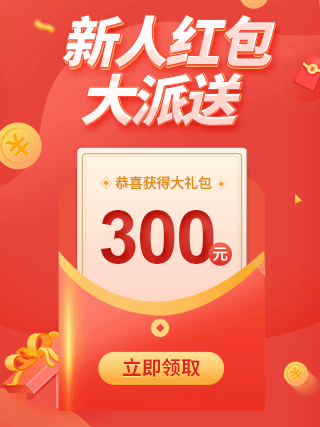SQL Server的JSON函数怎么使用,哪些事项要注意
Admin 2022-08-03 群英技术资讯 480 次浏览
 这篇文章主要介绍“SQL Server的JSON函数怎么使用,哪些事项要注意”的相关知识,下面会通过实际案例向大家展示操作过程,操作方法简单快捷,实用性强,希望这篇“SQL Server的JSON函数怎么使用,哪些事项要注意”文章能帮助大家解决问题。
这篇文章主要介绍“SQL Server的JSON函数怎么使用,哪些事项要注意”的相关知识,下面会通过实际案例向大家展示操作过程,操作方法简单快捷,实用性强,希望这篇“SQL Server的JSON函数怎么使用,哪些事项要注意”文章能帮助大家解决问题。SQL Server 2005开始支持XML数据类型,提供原生的XML数据类型、XML索引及各种管理或输出XML格式的函数。
随着JSON的流行,SQL Server 2016开始支持JSON数据类型,不仅可以直接输出JSON格式的结果集,还能读取JSON格式的数据。
官方文档:https://docs.microsoft.com/zh-cn/sql/relational-databases/json/json-data-sql-server?view=sql-server-2017
下面是我们熟悉的SELECT及输出格式,后面对JSON的演示基于此SQL:

一、 将查询结果输出JSON格式
1、FOR JSON AUTO:SELECT语句的结果以JSON输出。
要将SELECT语句的结果以JSON输出,最简单的方法是在后面加上FOR JSON AUTO:

2、FOR JSON AUTO,Root(’’) :为JOSN加上根节点
若要为FOR JSON加上Root Key,可以用ROOT选项来自定义ROOT 节点的名称:

3、FOR JSON PATH输出:可通过列别名来定义JSON对象的层次结构
若要自定义输出JSON格式的结构时,必须使用JSONPATH。
- FOR JSON Auto,自动按照查询语句中使用的表结构来创建嵌套的JSON子数组,类似于For Xml Auto特性。
- FOR JSON Path,通过列名或者列别名来定义JSON对象的层次结构,列别名中可以包含“.”,JSON的成员层次结构将会与别名中的层次结构保持一致。
这个特性非常类似于早期SQL Server版本中的For Xml Path子句,可以使用斜线来定义xml的层次结构。

4、FOR JSON PATH+ROOT输出:为JOSN加上根节点

5、INCLUDE_NULL_VALUES:值null的字段需要显示出现。
为NULL的数据在输出JSON时,会被忽略,若想要让NULL的字段也显示出来,可以加上选项INCLUDE_NULL_VALUES,该选项也适用于AUTO。

6、列的别名,可以增加带有层级关系的节点。
比如下面的SQL,增加了一个“SN”节点,把栏位SERNUM和CLIMAT放在里面:

演示实例:
select TOP (2) id, Plies, Createtime from [dbo].[B3PliesData] ORDER BY ID ;
--1178 3 2020-07-21 14:33:18.480
--1179 3 2020-07-21 14:36:27.457
select TOP (2) id, Plies as [myObject.Plies], Createtime as [myObject.Createtime] from [dbo].[B3PliesData] ORDER BY ID for json auto;
--[{"id":1178,"myObject.Plies":3,"myObject.Createtime":"2020-07-21T14:33:18.480"},{"id":1179,"myObject.Plies":3,"myObject.Createtime":"2020-07-21T14:36:27.457"}]
select TOP (2) id, Plies, Createtime from [dbo].[B3PliesData] ORDER BY ID for json auto ,root('myRoot') ;
--{"myRoot":[{"id":1178,"Plies":3,"Createtime":"2020-07-21T14:33:18.480"},{"id":1179,"Plies":3,"Createtime":"2020-07-21T14:36:27.457"}]}
select TOP (2) id, Plies as [myObject.Plies], Createtime as [myObject.Createtime] from [dbo].[B3PliesData] ORDER BY ID for json path;
--[{"id":1178,"myObject":{"Plies":3,"Createtime":"2020-07-21T14:33:18.480"}},{"id":1179,"myObject":{"Plies":3,"Createtime":"2020-07-21T14:36:27.457"}}]
select TOP (2) id, Plies, Createtime,null as mynull from [dbo].[B3PliesData] ORDER BY ID for json path,root('myRoot');
--{"myRoot":[{"id":1178,"Plies":3,"Createtime":"2020-07-21T14:33:18.480"},{"id":1179,"Plies":3,"Createtime":"2020-07-21T14:36:27.457"}]}
select TOP (2) id, Plies, Createtime,null as mynull from [dbo].[B3PliesData] ORDER BY ID for json path,root('myRoot'),include_null_values;
--{"myRoot":[{"id":1178,"Plies":3,"Createtime":"2020-07-21T14:33:18.480","mynull":null},{"id":1179,"Plies":3,"Createtime":"2020-07-21T14:36:27.457","mynull":null}]}
二、 解析JSON格式的数据
1、使用OPENJSON()函数:

2、通过WITH选项,自定义输出列:

实例演示:
-------------1、-------------
declare @json as varchar(8000)
set @json='[
{"id":1178,"myObject.Plies":3,"myObject.Createtime":"2020-07-21T14:33:18.480"},
{"id":1179,"myObject.Plies":3,"myObject.Createtime":"2020-07-21T14:36:27.457"}]'
select * from openjson(@json);
--key value type
--0 {"id":1178,"myObject.Plies":3,"myObject.Createtime":"2020-07-21T14:33:18.480"} 5
--1 {"id":1179,"myObject.Plies":3,"myObject.Createtime":"2020-07-21T14:36:27.457"} 5
-------------2、-------------
declare @json1 as varchar(8000)
set @json1='[
{"id":1178,"myObject.Plies":3,"myObject.Createtime":"2020-07-21T14:33:18.480"},
{"id":1179,"myObject.Plies":3,"myObject.Createtime":"2020-07-21T14:36:27.457"}]
'
select * from openjson(@json1)
with(
id varchar(10) '$.id',
Plies int '$."myObject.Plies"',
Createtime datetime '$."myObject.Createtime"'
);
--id Plies Createtime
--1178 3 2020-07-21 14:33:18.480
--1179 3 2020-07-21 14:36:27.457
-------------3、-------------
declare @json2 as varchar(8000)
set @json2='{"myRoot":[
{"id":1178,"myObject":{"Plies":3,"Createtime":"2020-07-21T14:33:18.480"}},
{"id":1179,"myObject":{"Plies":3,"Createtime":"2020-07-21T14:36:27.457"}}
]}'
select * from openjson(@json2,'$.myRoot')
with(
id varchar(10) ,
Plies int '$.myObject.Plies',
Createtime datetime '$.myObject.Createtime'
);
--id Plies Createtime
--1178 3 2020-07-21 14:33:18.480
--1179 3 2020-07-21 14:36:27.457
三、JSON函数
declare @param nvarchar(max);
set @param = N'{
"info":{
"type":1,
"address":{
"town":"Bristol",
"county":"Avon",
"country":"England"
},
"tags":["Sport", "Water polo"]
},
"type":"Basic"
}';
1、ISJSON:测试字符串是否包含有效 JSON。
print iif(isjson(@param) > 0, 'OK', 'NO');
返回:OK
2、JSON_VALUE :从 JSON 字符串中提取标量值。
print json_value(@param, '$.info.address.town'); print json_value(@param, '$.info.tags[1]');
返回:Bristol,Water polo
3、JSON_QUERY :从 JSON 字符串中提取对象或数组。返回类型为 nvarchar(max) 的 JSON 片段
print json_query(@param, '$.info');
{
"type":1,
"address":{
"town":"Bristol",
"county":"Avon",
"country":"England"
},
"tags":["Sport", "Water polo"]
}
4、JSON_MODIFY :更新 JSON 字符串中属性的值,并返回已更新的 JSON 字符串。
print json_modify(@param, '$.info.address.town', 'London');
返回:
{
"info":{
"type":1,
"address":{
"town":"London",
"county":"Avon",
"country":"England"
},
"tags":["Sport", "Water polo"]
},
"type":"Basic"
}
实例演示:
declare @param nvarchar(max);
set @param=N'{
"info":{
"type":1,
"address":{
"town":"Bristol",
"county":"Avon",
"country":"England"
},
"tags":["Sport", "Water polo"]
},
"type":"Basic"
}';
print iif(isjson(@param)>0, 'OK', 'NO');
print json_query(@param);
print json_value(@param, '$.info.address.town');
print json_value(@param, '$.info.tags[1]');
print json_query(@param, '$.info');
print json_query('["2020-1-8","2020-1-9"]');
print json_modify(@param, '$.info.address.town', 'London');
四、注意事项
SQL2016 中的新增的内置JSON进行了简单介绍,主要有如下要点:
- JSON能在SQLServer2016中高效的使用,但是JSON并不是原生数据类型;
- 如果使用JSON格式必须为输出结果是表达式的提供别名;
- JSON_VALUE 和 JSON_QUERY 函数转移和获取Varchar格式的数据,因此必须将数据转译成你需要的类型。
- 在计算列的帮助下查询JSON可以使用索引进行优化。
现在大家对于SQL Server的JSON函数怎么使用,哪些事项要注意的内容应该都有一定的认识了吧,希望这篇能对大家有所帮助。最后,想要了解更多,欢迎关注群英网络,群英网络将为大家推送更多相关的文章。

免责声明:本站发布的内容(图片、视频和文字)以原创、转载和分享为主,文章观点不代表本网站立场,如果涉及侵权请联系站长邮箱:mmqy2019@163.com进行举报,并提供相关证据,查实之后,将立刻删除涉嫌侵权内容。
猜你喜欢
-
SQL Server如何更新目标表数据,SQL语句怎么写
这篇文章主要介绍了SQL Server 远程更新目标表数据的存储过程,适用于更新列名一致,主键为Int类型,具体实例代码大家参考下本文
-
SQLserver中组合累加排序怎么实现,SQL语句是什么
本文分享SQL语句实现表中字段的组合累加排序的实例代码,希望能给大家做一个参考。
-
SQL Server查询分组记录的实现方法是什么
这篇文章介绍了SQL Server实现查询每个分组的前N条记录,文中通过示例代码介绍的非常详细。对大家的学习或工作具有一定的参考借鉴价值,需要的朋友可以参考下
-
SQL视图怎样创建、更新和删除?SQL视图操作详解
SQL视图就是可视化的表,在数据库开发过程中是非常重要的,能够很大的提高查询速度,这篇文章就主要解决如何来创建,更新和删除视图。
-
SQL游标的功能是什么,怎样使用?
很多新手在学习SQL游标时,对于SQL游标的定义以及使用不是很清楚,因此文本给大家分享的关于SQL游标的使用,具有一定的参考价值,有这方面学习需要的朋友可以看看。
成为群英会员,开启智能安全云计算之旅
立即注册Copyright © QY Network Company Ltd. All Rights Reserved. 2003-2020 群英 版权所有
增值电信经营许可证 : B1.B2-20140078 粤ICP备09006778号 域名注册商资质 粤 D3.1-20240008





